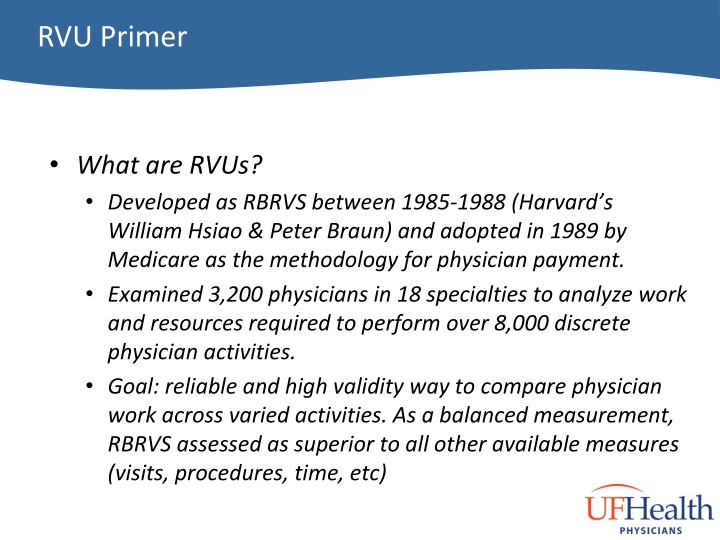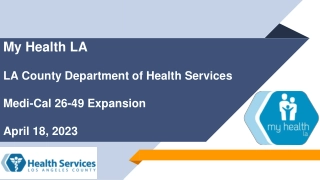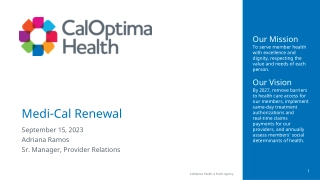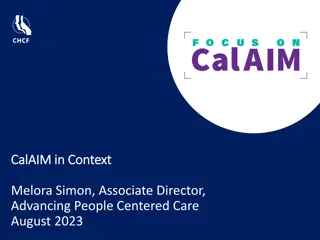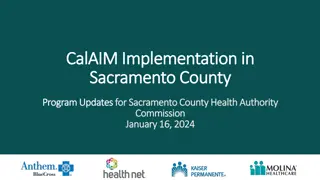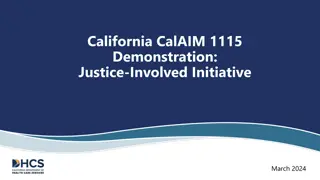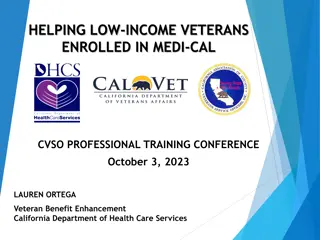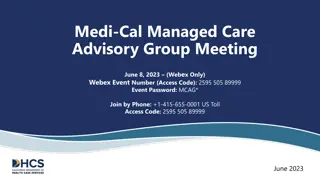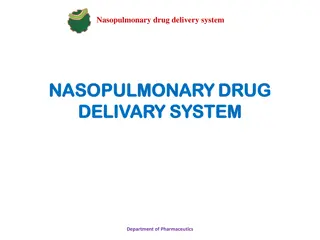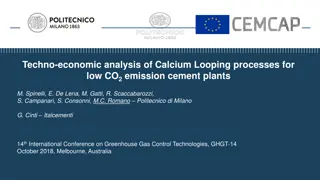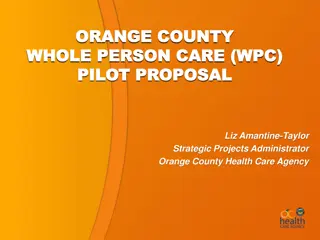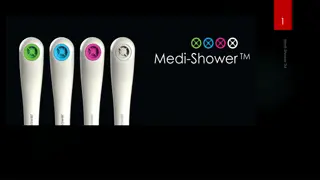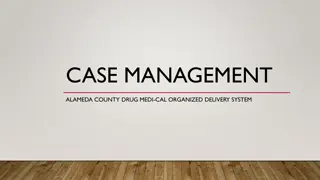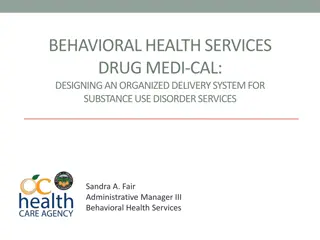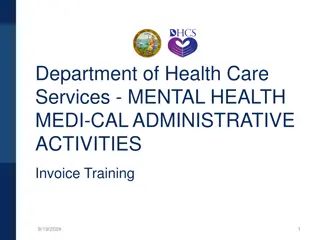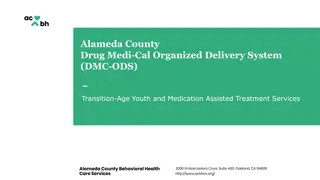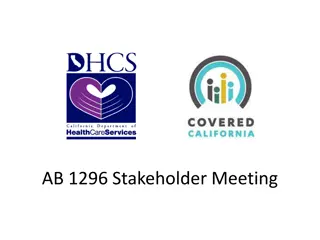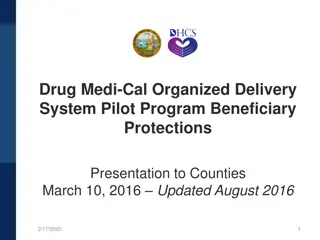Drug Medi-Cal Organized Delivery System Claiming Technical Assistance
This content provides information on a webinar offering technical assistance for counties regarding the Drug Medi-Cal Organized Delivery System (DMC-ODS) claiming process. It covers topics such as Healthcare Common Procedure Coding System, DMC Billing Manual, new DMC-ODS waiver chapter, HCPCS codes and modifiers, and more. The content emphasizes the importance of using the correct codes and modifiers for successful claim approval in the Short-Doyle Medi-Cal system.
Download Presentation

Please find below an Image/Link to download the presentation.
The content on the website is provided AS IS for your information and personal use only. It may not be sold, licensed, or shared on other websites without obtaining consent from the author.If you encounter any issues during the download, it is possible that the publisher has removed the file from their server.
You are allowed to download the files provided on this website for personal or commercial use, subject to the condition that they are used lawfully. All files are the property of their respective owners.
The content on the website is provided AS IS for your information and personal use only. It may not be sold, licensed, or shared on other websites without obtaining consent from the author.
E N D
Presentation Transcript
RVU Primer What are RVUs? Developed as RBRVS between 1985-1988 (Harvard s William Hsiao & Peter Braun) and adopted in 1989 by Medicare as the methodology for physician payment. Examined 3,200 physicians in 18 specialties to analyze work and resources required to perform over 8,000 discrete physician activities. Goal: reliable and high validity way to compare physician work across varied activities. As a balanced measurement, RBRVS assessed as superior to all other available measures (visits, procedures, time, etc) 1
RVU Primer How are RVUs used around the country? Payment Medicare, Medicaid, BCBS, most others Budgeting Productivity benchmarking Expense allocation How are RVUs updated? AMA Specialty Society RVU Update Committee (RUC) on contract to CMS reviews RVU values on a continuous cycle with all RVUs updated at least every 5 years. CMS accepts 75-90% RUC recommendations 3
RVU Primer RVU components Physician work (typically about 52%) time, technical skill, mental effort, judgement, stress involved with an activity Practice expense (typically about 44%) nonphysician clinical and non-clinical; labor, building expense, office supplies, etc. Professional liability expense RVUs are not $$s, but payment systems tend to multiply RVUs times a conversion factor to get to payment Coding is key each CPT code (over 8,000 of them) drives an RVU 4
Some RVU examples 59400, Global prenatal and delivery - Vaginal Work RVU: 32.16 Total RVU: 60.17 27245, Hip fracture repair (open treatment, with internal fixation) Work RVU: 18.18 Total RVU: 35.49 47562, Laparoscopic cholecystectomy (bladder removal) Work RVU: 10.47 Total: RVU 19.06 99213, Level 3 follow up office visit Work RVU: .97 Total RVU (non-facility): 2.05 Total RVU(facility): 1.44 99222, Level 2 hospital admission Work RVU: 2.61 Total RVU: 3.86 99291, 1 hour of ICU care Work RVU: 4.5 Total RVU(non-facility): 7.75 Total RVU(facility): 6.31 6
?? 9
